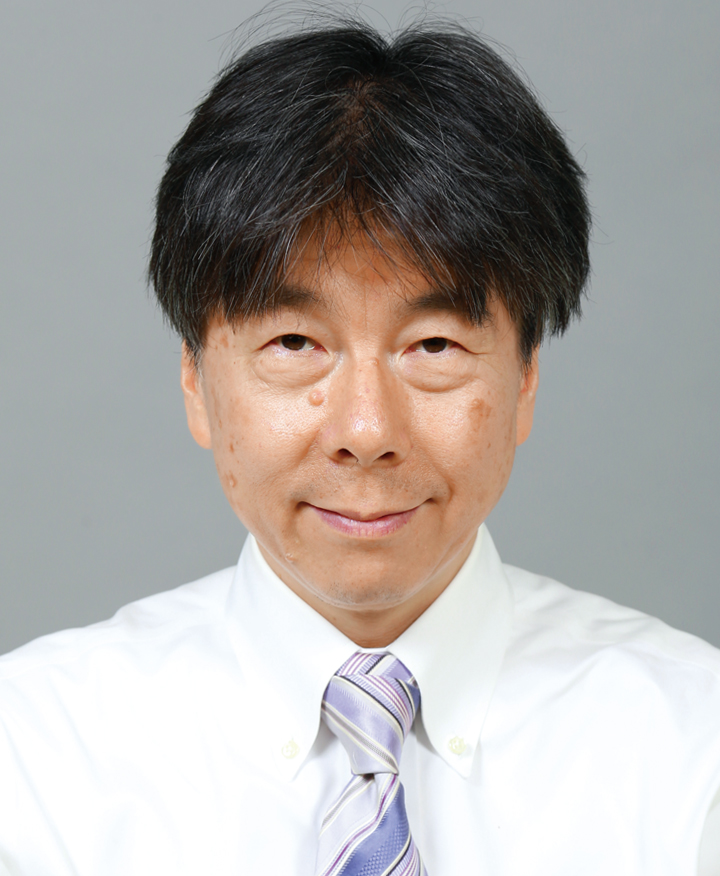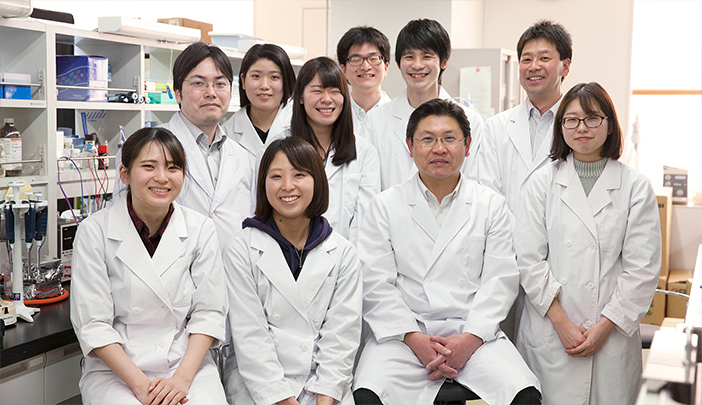 Researchers
Researchers
- HOME
- English
- Researchers
- HARAGUCHI Kazuhiro, Ph.D. / Professor
HARAGUCHI Kazuhiro, Ph.D. / Professor
Division of Organic and Medicinal Chemistry
Department of Pharmaceutical Sciences

Research Topics
1. Development of novel method for synthesis of sugar-modified nucleoside utilizing unsaturatedsugar nucleoside and its evaluation for antiviral and antitumor activity
2. Stereoselective synthesis of 4’-thionucleoside utilizing 4-thiofuranoid glycal as glycosyl donor and its evaluation for antiviral and antitumor activity
3. Design and synthesis of modified nucleoside antibiotic for development of antibacterial agent
Research in our group is focused on medicinal chemistry on the basis of nucleic acid chemistry for development of novel antiviral, antitumor and antibacterial nucleoside derivatives Synthetic methods for construction of carbon-carbon bond at the sugar portion of nucleosides have been developed starting from unsaturated sugar nucleosides. Face-selective electrophilic addition of 1’,2’-unsaturated nucleosides and subsequent nucleophilic substitution or addition of nucleoside anomeric radical generated by 1,2-acyloxy migration gave 1’-carbon-substituted nucleoside analogues. 2’,3’-unsaturated nucleosides having enol ester or bromovinyl structure, synthesized through selenoxide synelimination,were served as versatile syntons for C-C bond formation at 2’- and 3’-positions based on electrophilic substitution or palladium-catalyzed coupling reaction. Allylic rearrangement of 3’,4’-unsaturated nucleosides provided a new method for stereoselective synthesis of 4’-carbon-substituted nucleosides. Intermolecular radical addition of 4’,5’-unsaturated nucleoside furnished 5’-carbon-substituted nucleosides, while nucleophilic ring opening of 4’,5’-epoxynucleoside obtained by oxidation of 4’,5’-unsaturated derivatives paved a way for stereoselective synthesis of 4’-carbon-substituted nucleosides. Stereoselectivity of epoxidation of 1’,2’-unsaturated uridine varied by changing silyl protecting group of the 3’- and 5’-hydroxyl groups. Using 3’,5’-O-(di-t-butylsilylene)-protected derivative, the 1’,2’-“down” epoxide was formed exclusively. Although the ring opening of this epoxide with organoaluminum reagents (R3Al) led to the formation of various types of 1’-branched uridines, their a-anomers were also formed. It was assumed that the a-anomers would be formed through coordination of R3Al to the carbonyl oxygen of the 2-position of the base moiety. This was supported by the fact that both N 3-benzyloxymethyl and N 3-benzoyl derivatives gave the desired b-anomers exclusively. In the reaction between epoxides obtained from 4’,5’-unasaturated thymine-nucleosides and Me3Al, stereochemistry of the introduced 4’-methyl group is controlled by the configuration of the 3’-O-silyl group. Thus, the threo-isomer gave the 4’-methyl-b-D-nucleoside exclusively, while the erythro-isomer gave the 4’-methyl-a-L-nucleoside as the main product. Other substituent such as vinyl and ethynyl groups can be introduced to the 4’-position based on this approach. Among these novel 4’-branched nucleosides synthesized in this study, 2’,3’-didehydro-3’-deoxy-4’-ethynylthymidine (Ed4T, Festinavir) was found to be more inhibitory against HIV-1 than the parent compound stavudine (d4T), and much less toxic to various cells and also to mitochondrial DNA synthesis. β-Anomers of 4’-thionucleosides have been synthesized by means of PhSeCl- or N-iodosuccinimide (NIS) -initiated electrophilic glycosidation between a glycosyl donor, 3,5-O-(di-t-butylsilylene) (DTBS)-4-thiofuranoid glycal, and silylated nucleobases. The resulting products can be transformed into ribofuranosyl-, 2’-deoxyribofuranosyl- and arabinofuranosyl derivatives through manipuration of the 2’-SePh and 2’-I substituents. This approach also allowed the synthesis of analogues having a carbonsubstituent at the anomeric position, since lithium diisopropylamide (LDA)-lithiation of 3,5-O-(1,1,3,3-tetraisopropyldisiloxane-1,3-diyl) (TIPDS)-4-thiofuranoid glycal and subsequent reaction with appropriate electrophiles gave C1-carbon-substituted glycals. As an application of this method, the thio-counterpart of antitumor nucleoside antibiotic angustmycin C was synthesized. The synthesis of 2’-β-carbon-substituted nucleoside analogues has been accomplished by using 1-chloro-TIPDS-4-thiofuranoid glycal, since the use of lithium 2,2,6,6-tetramethylpiperidide (LTMP) enabled its C-2 lithiation. Among the analogues synthesized in this study, 1’-methyl-4’-thiothymidine was found to exhibit inhibitory effect of angiogenesis.
Representative Publications
1. Haraguchi, K.; Delaney, M. O.; Wiederholt, C. J.; Sambandam A.; Hantosi, Z.; Greenberg, M. M., ”Synthesis and characterization of oligodeoxynucleotides containing formamidopyrimidine lesions and nonhydrolyzable analogues”, J. Am. Chem. Soc. 2002, 124, 3263-3269.
2. Haraguchi, K.; Itoh, Y.; Tanaka, H., “Carbon-carbon bond formation at the sugar portion of nucleosides: synthetic potential of unsaturated-sugar nucleosides”, J. Synth. Org. Chem., Jpn., 2003, 61, 974-983.
3. Haraguchi K 4-Thiofuranoid glycal-based stereoselective synthesis of 4’-thionucleosides and its inhibitory effect of angiogenesis.: Advances In Pharmaceutical Scinences, 22, 39-48 (2006)4.
4. Haraguchi, K.; Takeda, S.; Kubota, Y.; Kumamoto, H.; Tanaka, H.; Hamasaki, T.; E; Baba, M.; Paintsil, E.; Cheng, Y.-C.; Urata, Y., “Next Generation Anti-HIV Agent 4’-Ethynylstavudine: From The Bench To The Clinic”, Frontiers in Clininal Drug Reseach: HIV, Bentham Science Publishing, volume 1, 123-184 (2015).

 JP
JP ACCESS
ACCESS SNS
SNS



 受験生の方へ
受験生の方へ 在学生の方へ
在学生の方へ 資料請求
資料請求 SNS
SNS ENGLISH
ENGLISH LMS
LMS 交通アクセス
交通アクセス 採用情報
採用情報
 お問い合わせ
お問い合わせ